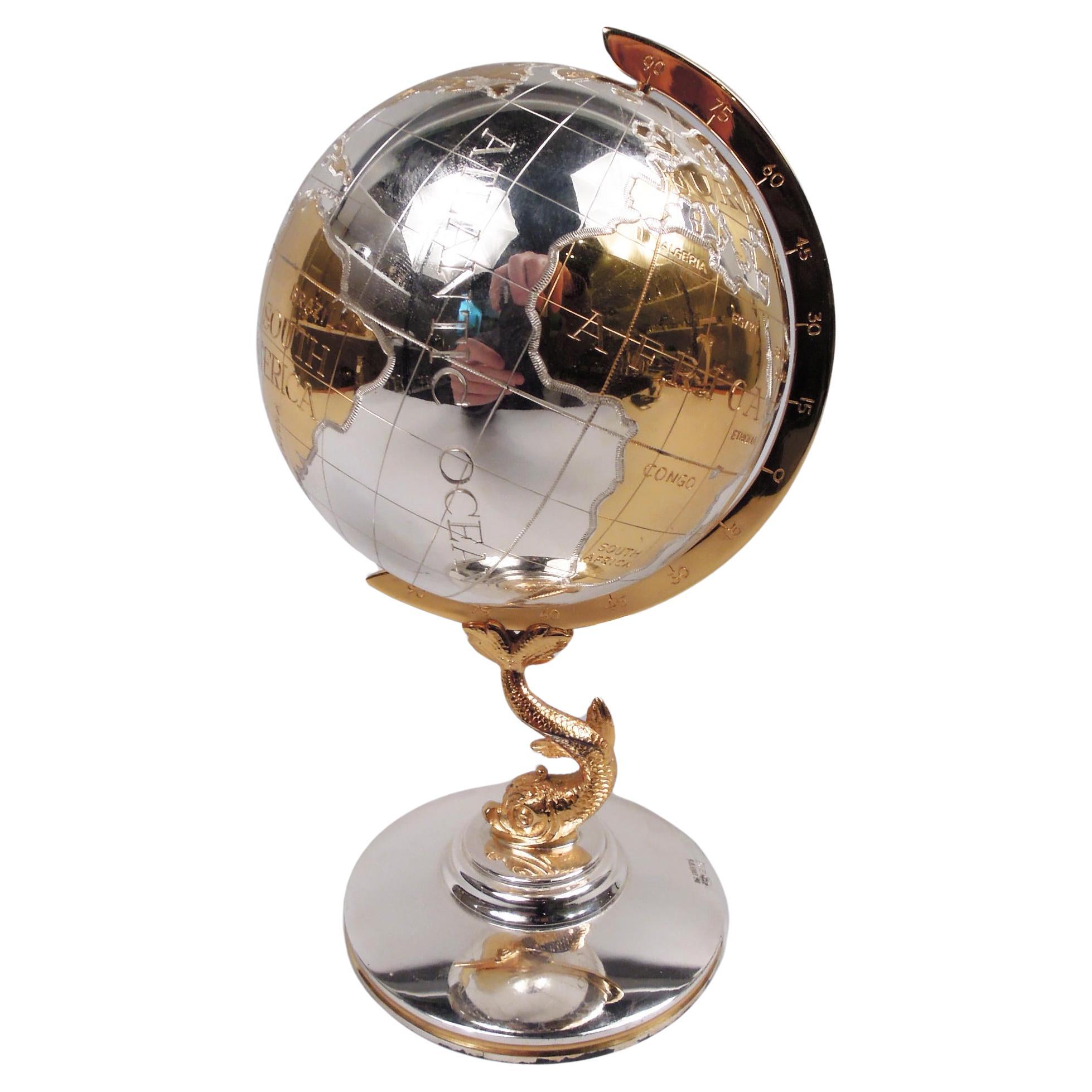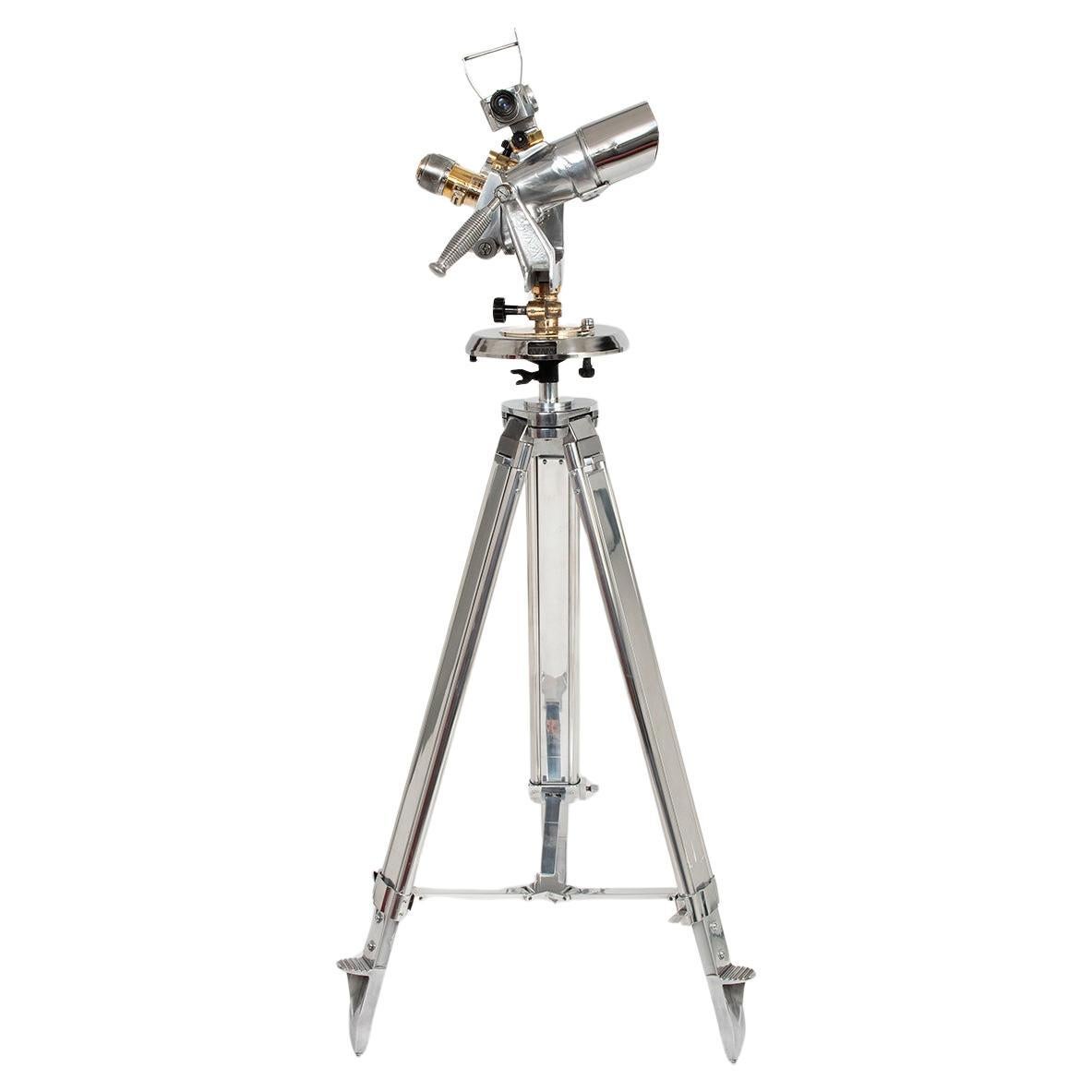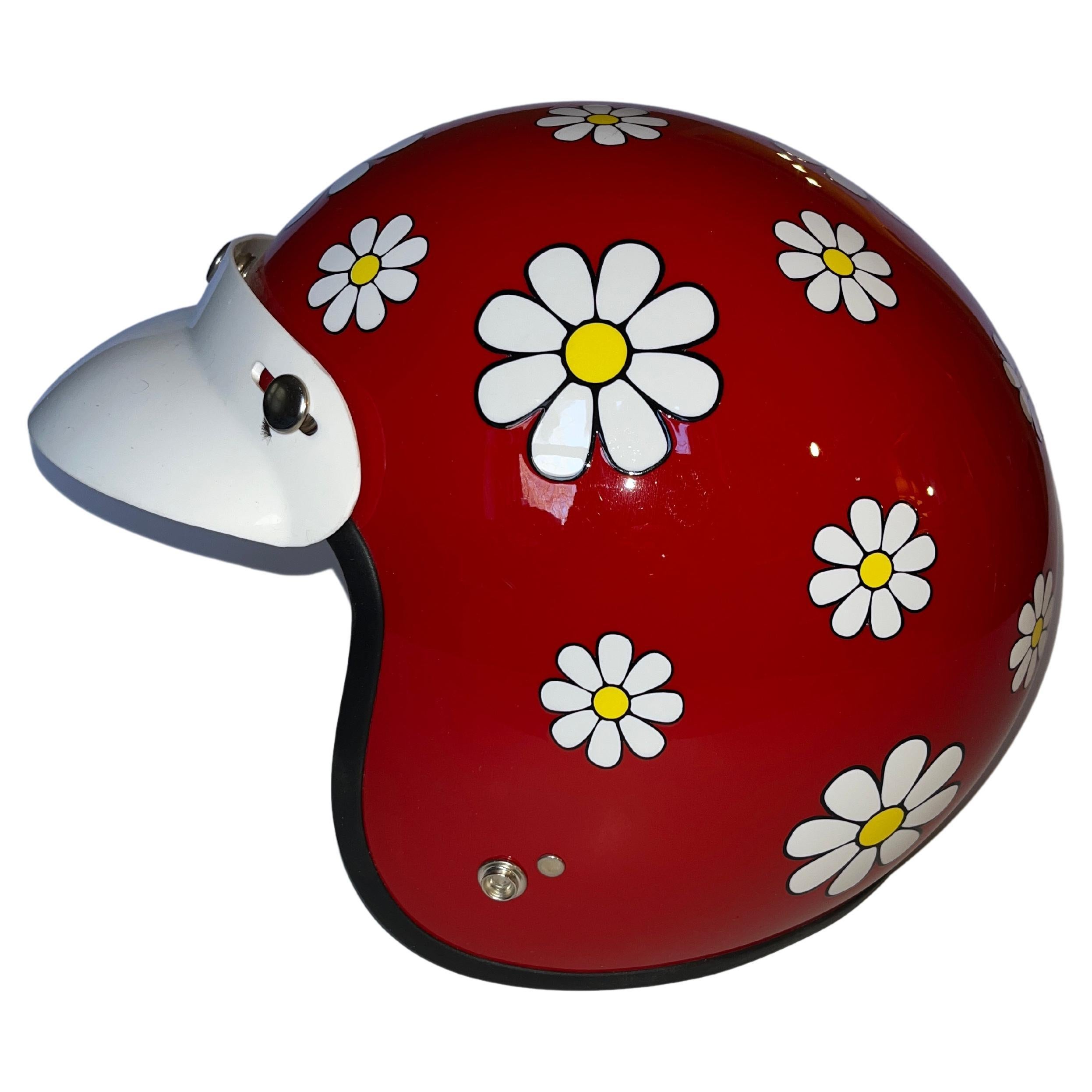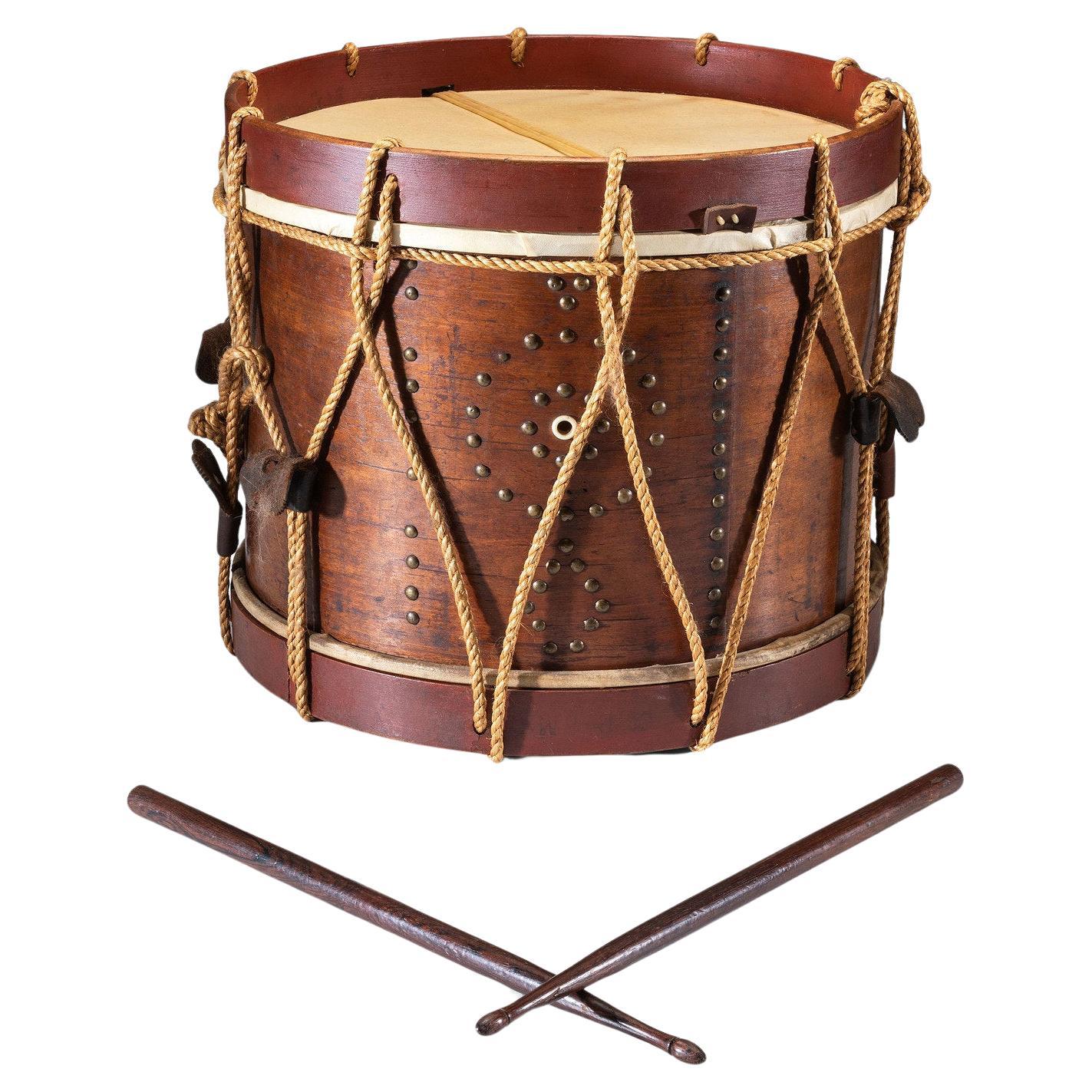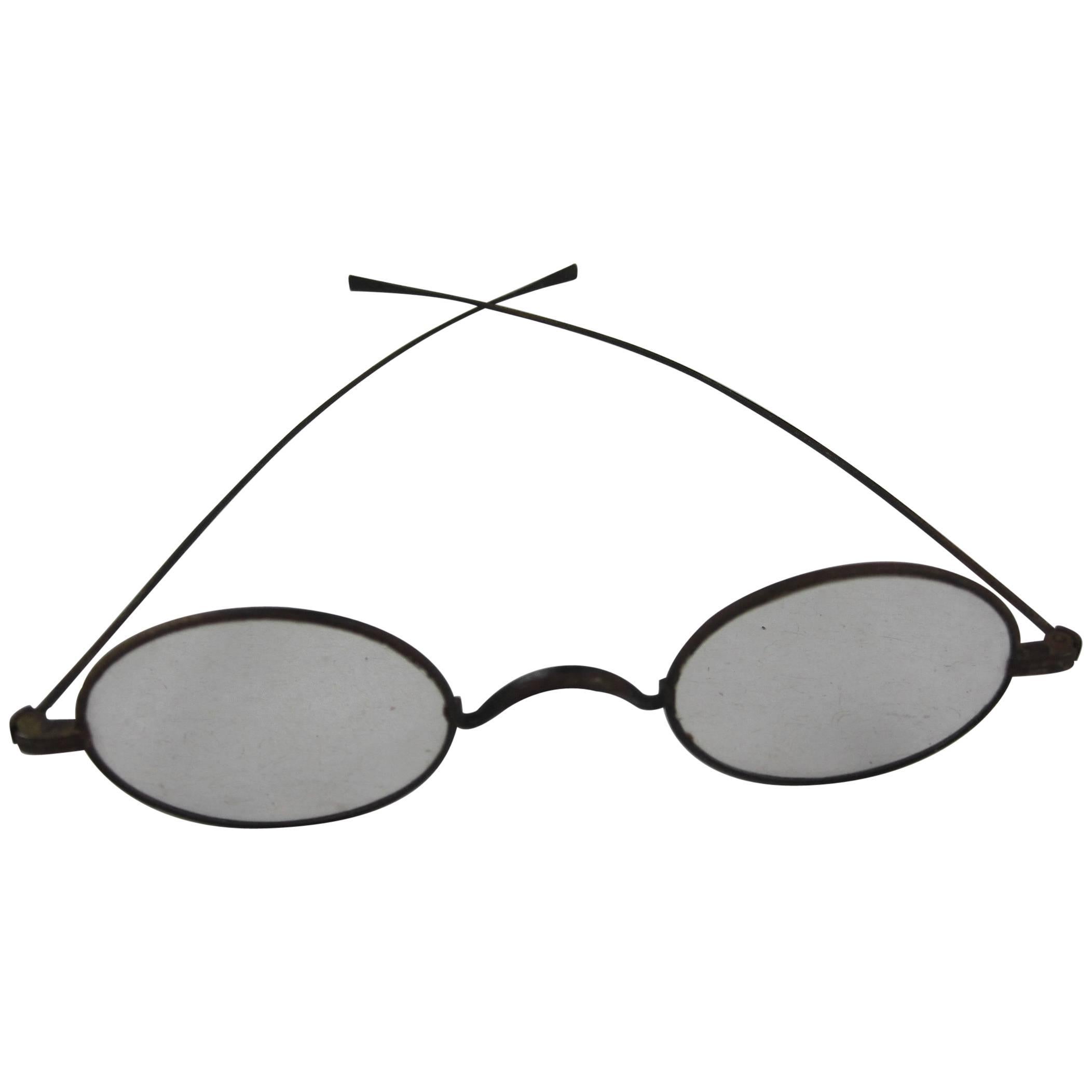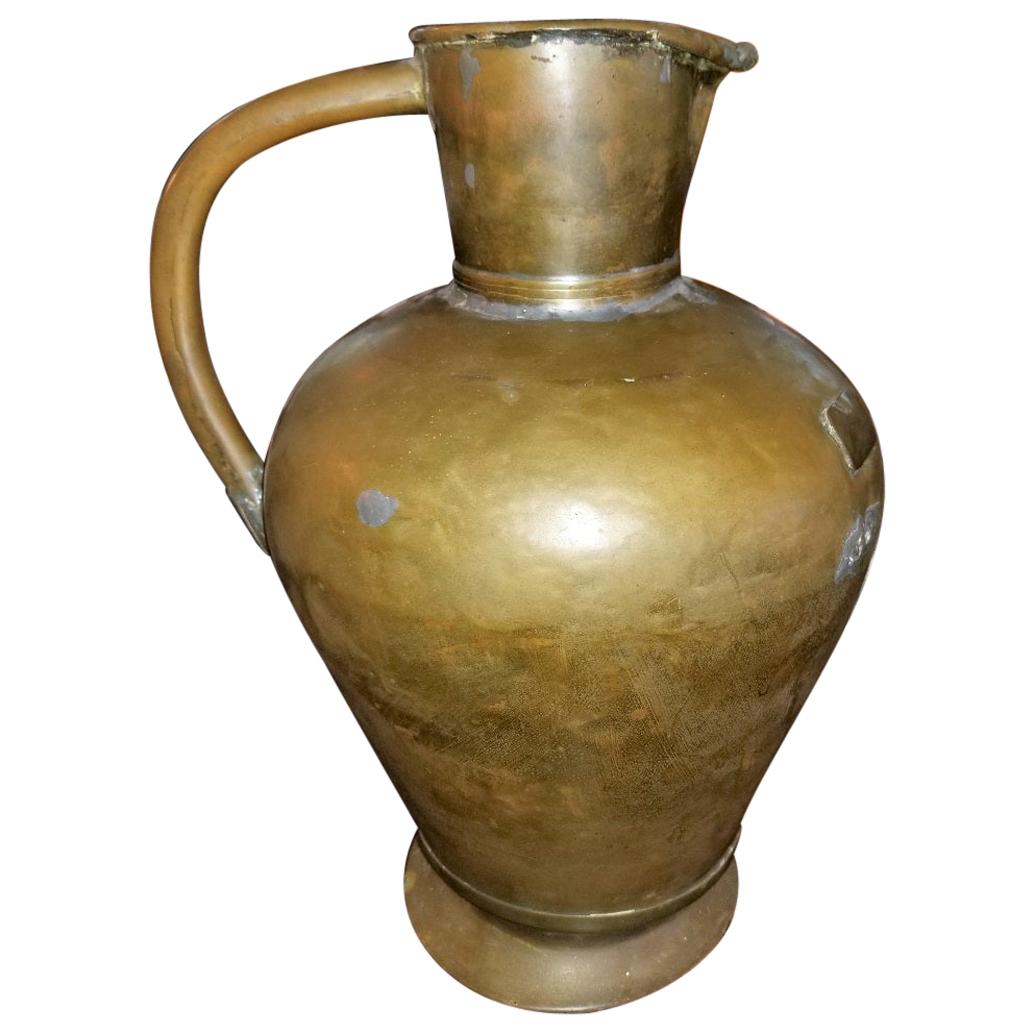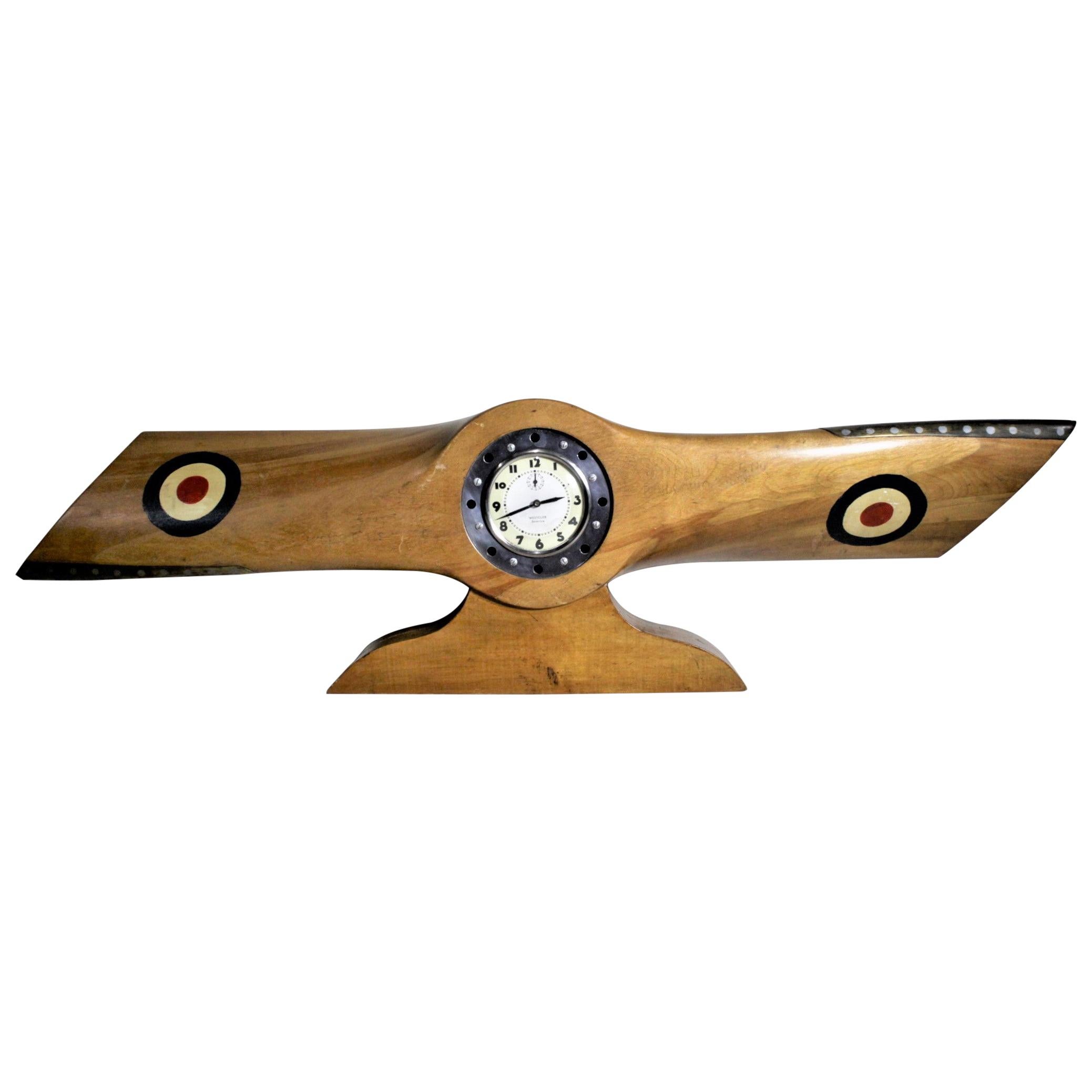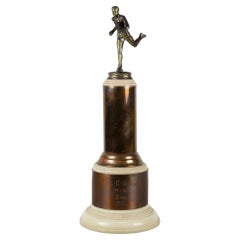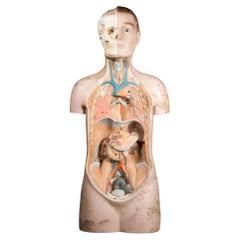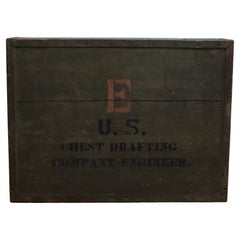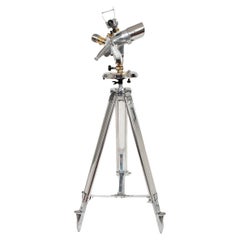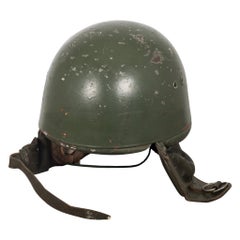
Cold War Era Polish Paratrooper Helmet, circa 1950
View Similar Items
Want more images or videos?
Request additional images or videos from the seller
1 of 6
Cold War Era Polish Paratrooper Helmet, circa 1950
About the Item
- Dimensions:Height: 6 in (15.24 cm)Width: 8 in (20.32 cm)Depth: 11 in (27.94 cm)
- Style:Industrial (Of the Period)
- Materials and Techniques:
- Period:
- Date of Manufacture:1950
- Condition:Wear consistent with age and use. Minor structural damages.
- Seller Location:San Francisco, CA
- Reference Number:1stDibs: LU1280215321202
About the Seller
5.0
Platinum Seller
These expertly vetted sellers are 1stDibs' most experienced sellers and are rated highest by our customers.
Established in 2014
1stDibs seller since 2015
1,145 sales on 1stDibs
More From This SellerView All
- Vintage Brass Track Trophy with Bakelite Base, circa 1950 (FREE SHIPPING)Located in San Francisco, CAABOUT An original brass plated track trophy with a Bakelite base. Engraved solid brass sleeve. CREATOR Nobel Trophies for Champions. DATE OF MANUFACTURE circa 1950. MATERI...Category
Mid-20th Century Industrial Sports Equipment and Memorabilia
MaterialsBrass
$116 Sale Price20% Off - Midcentury French Anatomical Medical Teaching Display, circa 1950Located in San Francisco, CAAbout A midcentury French anatomical medical teaching device of the human body. The organs and muscles are numbered and the skull has Roman numerals. One glass eye. The piece has re...Category
Mid-20th Century Mid-Century Modern Models and Miniatures
MaterialsPlastic, Wood
$525 Sale Price38% Off - World War 2 Era Military Trunk, c.1940Located in San Francisco, CAAbout A World War 2 era Army military trunk with original stenciled graphics on top, label and hinged lid. Army green with black and brick red stencil. ...Category
Early 20th Century Trunks and Luggage
MaterialsAluminum
$1,020 Sale Price45% Off - Vintage Wilson Leather Boxing Gloves c.1950 (FREE SHIPPING)By Wilson Sporting GoodsLocated in San Francisco, CAABOUT Original leather boxing gloves filled with horse hair. The leather is very soft and in good condition. . CREATOR Wilson Sporting Goods. DATE OF MANUFACTURE c.1950-1...Category
Early 20th Century American Industrial Sports Equipment and Memorabilia
MaterialsLeather, Natural Fiber
- Vintage Marathon Leather Boxing Gloves c.1950-1960 (FREE SHIPPING)Located in San Francisco, CAABOUT A pair of authentic vintage boxing gloves with reddish, brown leather. Each glove has gold leather piping. The leather is very soft and is good condition. Stamped "Marathon" o...Category
Mid-20th Century American Industrial Sports Equipment and Memorabilia
MaterialsLeather
- Vintage Marathon Leather Boxing Gloves c.1950-1960 (FREE SHIPPING)Located in San Francisco, CAABOUT A pair of authentic vintage boxing gloves with reddish, brown leather. Each glove has gold leather piping. The leather is very soft and is good condition. Stamped "Marathon" o...Category
Mid-20th Century American Industrial Sports Equipment and Memorabilia
MaterialsLeather
You May Also Like
- German Cold War-Era Sterling Silver Desktop GlobeLocated in New York, NYGerman Cold War-era parcel gilt sterling silver globe. In c-scroll frame mounted to cast dolphin support in turn mounted to round foot. The world...Category
Mid-20th Century German Modern Maps
MaterialsSterling Silver
- Cold War Era Hand Cranked Air Raid SirenLocated in London, GBA cold war era Secomak hand cranked air raid siren. Type 447, designed and manufactured by Secomak during WWII and the Cold War. Secomak (Service El...Category
Mid-20th Century English Aviation Objects
MaterialsMetal
- USSR Cold War Era 10 x 80 Large Anti-Aircraft Binoculars, date stamped 1972.Located in Canterbury, GBA superb set of Russian 10 x 80 Large Anti-Aircraft Binoculars, date stamped 1972, manufactured during the Cold War period and originally issued to Soviet forces with outstanding opt...Category
Vintage 1970s Historical Memorabilia
MaterialsAluminum, Brass
- 20th Century Soviet Cold War Anti Aircraft Binoculars c.1950Located in Royal Tunbridge Wells, KentAn impressive set of highly polished Cold War-era anti-aircraft binoculars from the former USSR, crafted in the 20th Century. Accompanied by a sleek and adjustable metal tripod, thes...Category
Vintage 1950s Russian Other Scientific Instruments
MaterialsMetal
- "Army of the Potomac" by John Bachelder, Civil War Era Lithograph, circa 1863Located in Colorado Springs, COFully-entitled: Army of the Potomac. The Wagon Trains of the Army of the Potomac en Route from Chickahominy to James River VA. During the Seven...Category
Antique 19th Century American Prints
MaterialsPaper
- 36 Star American Flag, Civil War Era, Nevada StatehoodLocated in York County, PA36 Stars In The "Great Star" Or "Great Luminary" Pattern On A Civil War Era Flag With A Dusty Blue Canton And A Section Of One Stripe Souvenired, 1864-67, Nevada Statehood 36 star American national flag of the Civil War era, entirely hand-sewn and with some rare and beautiful features. The stars are arranged in a rendition of what is known as the Great Star or Great Luminary configuration, a large star made out of smaller stars. With no official star pattern before 1912, their design was left up to the artistic liberties of the flag-maker. Strikingly visual, the Great Star is both scarce and coveted by collectors. The 36th state, Nevada, entered the Union during the Civil War on October 31st, 1864. The last Confederate general surrendered on May 26th, 1865. The 36 star flag became official on July 4th of that year, but makers of printed flags would have begun adding a 36th star to their flags in 1864, even before the addition of the new state occurred. Lincoln pushed Nevada through just 8 days before the November election. Nevada’s wealth in silver was attractive to a nation struggling with the debts of war and increased support for the Republican ticket. The 36 star flag was replaced by the 37 star flag in 1867, with the addition of Nebraska. Adding to the flag's appeal is its small scale across those with of piece-and-sewn construction. During the 19th century, sewn flags (as opposed to those that were printed on cloth) were typically eight feet long and larger. This is because they were important in their function as signals, meaning that they needed to be seen and recognized from great distance. A flag that was six feet in length was considered small and production of flags smaller than this was extremely limited. Even infantry battle flags were approximately six by six and-one-half feet, about the size of an average quilt of the same period. As time passed, circumstances changed and sewn flags began to find more of a decorative purpose. Smaller flags are more scarce and far easier to frame and display. The Great Star configuration appears to have come about shortly after the War of 1812, when Congressman Peter Wendover of New York requested that Captain Samuel Reid, a War of 1812 naval hero, create a new design that would become the third official format of the Stars & Stripes. A recipient of the Congressional Medal of Honor, Reid became harbor master of New York following the war. During his lifetime, he created many innovations in signal use, including a system that could actually send messages from New York to New Orleans by sea in just two hours. Use as a Naval signal had been the primary reason for the initial creation of an American national flag in 1777, but since there was no official star design, the appearance of our flag varied greatly. Reid’s primary concern centered on both consistency and ease of recognition. His hope was as more and more states joined the Union and more and more stars were added to the flag, that it would remain easily identified on the open seas. In 1818, Reid suggested to Congress that the number of stripes permanently return to 13 (reduced from 15) and that the stars be grouped into the shape of one large star. Reid’s proposal would have kept the star constellation in roughly the same format, in a pattern that could be quickly identified through a spyglass as the number of states grew. His concept for the stripes was ultimately accepted, but his advice on the star pattern was rejected by President James Monroe, due to the increased cost of arranging the stars in what would become known as the “Great Star”, “Great Flower”, or “Great Luminary” pattern. Monroe probably didn’t wish to impose this cost on either the government or civilians, so he suggested a simple pattern of justified rows. Never-the-less, the Great Star was produced by anyone willing to make it and its rarity today, along with its beauty, has driven the desirability of American flags with this configuration. The canton and stripes of the flag are made of fine merino wool. Note how the canton has faded to a dusty seafoam blue, which is endearingly attractive. The stars of the flag are hand-sewn and single-appliquéd. This means that they were applied to one side of the canton, then the blue fabric was cut from behind each star, folded over, and under-hemmed, so that one star could be viewed on both sides of the flag. I always find single-appliquéd stars more interesting, not only because they are evidence of a more difficult level of seam-work and stitching, but also because they are more visually intriguing. The two visible rows of hand-stitching emphasize their hand-sewn construction, which is one reason why flags with single-appliquéd stars often appeal to connoisseurs of early American textiles...Category
Antique 1860s American Political and Patriotic Memorabilia
MaterialsWool
Price Upon Request
